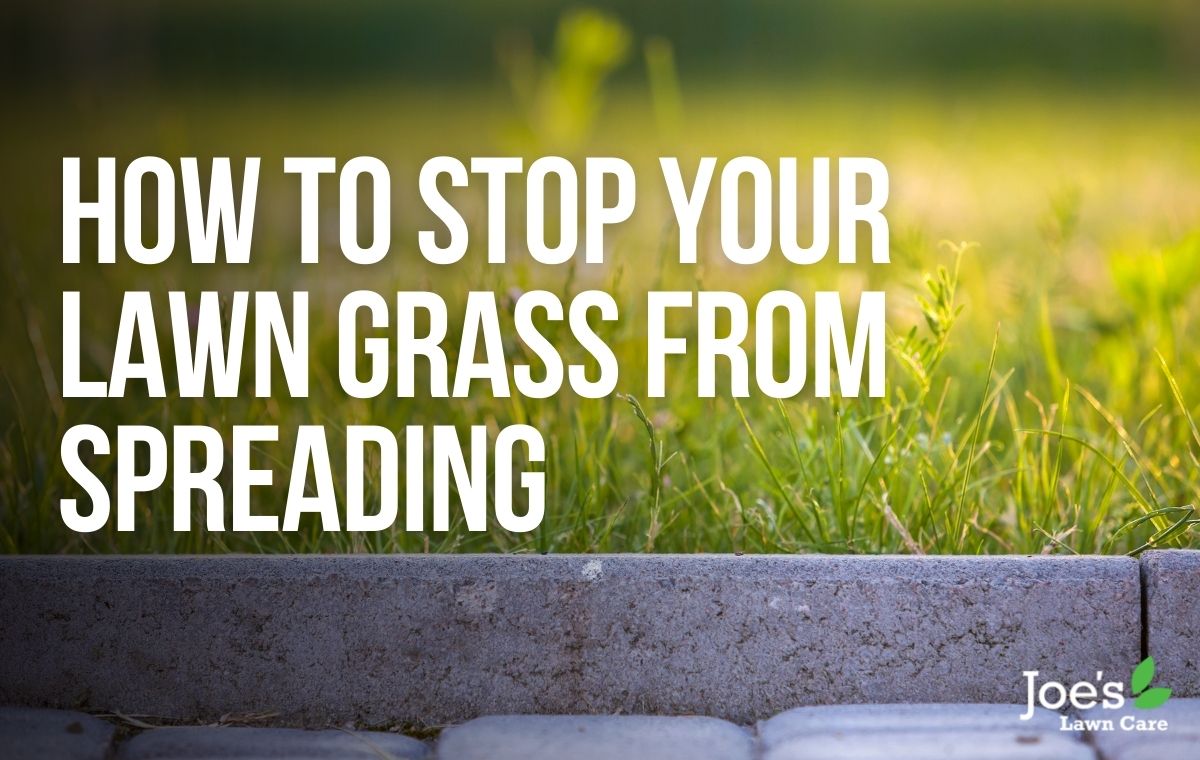Are your perennials taking over your garden, leaving you frustrated as they spread beyond their designated spaces? You’re not alone.
Many gardeners face the challenge of managing these persistent plants. But fear not, because there are simple and effective ways to keep your perennials in check without sacrificing the beauty they bring. Imagine having a garden where every plant stays exactly where you want it, adding to the charm without overwhelming your carefully planned layout.
In this guide, you’ll discover practical tips and strategies to stop your perennials from spreading uncontrollably, giving you back the control and peace of mind you deserve. Keep reading to unlock the secrets to a well-managed and flourishing garden.

Credit: growitbuildit.com
Identify Invasive Perennials
Identifying invasive perennials helps in managing their spread. Use barriers or root control techniques to contain growth. Regular trimming and monitoring prevent unwanted expansion in your garden.
Identifying invasive perennials is the first crucial step in preventing them from taking over your garden. These plants, while often beautiful and hardy, can be aggressive and outcompete other species, leaving you with a garden that lacks diversity. Knowing which perennials are prone to spreading uncontrollably allows you to plan effectively and maintain balance in your garden.Know Your Garden’s Perennial Residents
Take a walk around your garden and look closely at the plants you have. Many perennials are known for their ability to spread rapidly, but not all of them will become a problem. Some might be perfectly behaved in one garden but a menace in another due to differing conditions. Make a list of the perennials you have, and research their growth habits.Signs Of Invasive Behavior
Spotting invasive behavior early can save you a lot of trouble later. Look for signs like rapid spreading, crowding out other plants, or growing in places you didn’t plant them. If you notice a perennial growing aggressively and taking over space meant for other plants, it might be time to take action.Common Culprits
Some perennials have a reputation for being invasive. Varieties like mint, bamboo, and certain types of ivy can quickly overrun a garden. These plants often spread through underground runners or prolific seed production. If you have any of these plants, consider containment strategies like root barriers or regularly trimming back growth.My Personal Battle With Mint
I once planted mint in a small corner of my garden, thinking it would be a nice addition for tea and cooking. Within months, it had spread to nearly half of my garden, choking out other plants. I learned the hard way how invasive it could be, teaching me to research thoroughly before planting new perennials. Have you ever been surprised by a plant’s growth habits?Research And Prepare
Before adding new perennials to your garden, do some research. Check gardening forums, ask local gardeners, or consult gardening books to learn about their spreading tendencies. Equipped with knowledge, you can decide whether a plant is worth the risk or if it needs special containment measures.Take Control Of Your Garden
Ultimately, the key to stopping perennials from spreading uncontrollably is vigilance and proactive management. Regularly assess your garden and take steps to keep invasive plants in check. By understanding and identifying invasive perennials early, you can ensure your garden remains diverse and thriving, rather than being dominated by a few aggressive species. What steps will you take to maintain harmony in your garden?Choose The Right Location
Selecting the right location helps manage perennials. Plant them in defined areas with barriers. This keeps their spread under control.
Choosing the right location for your perennials is crucial if you want to keep them from spreading uncontrollably. It’s more than just about aesthetics; it’s about maintaining balance in your garden. By considering the space and conditions, you can enjoy the beauty of perennials without the chaos of an overgrown garden.Consider The Sunlight
Perennials thrive differently depending on their sunlight needs. Some need full sun, while others prefer shade. Planting sun-loving perennials in a shaded area might restrict their growth, but it won’t stop their spreading roots. Ensure that the location matches the sunlight requirements of your plants to keep them in check.Assess The Soil Quality
Soil quality plays a big role in the growth of perennials. Rich, fertile soil can encourage rapid growth and spread. If your goal is to limit their spread, consider planting in less fertile soil. Alternatively, using barriers to control root spread can be effective.Evaluate The Space
Do you have enough room for the perennials to grow without encroaching on other plants? It’s essential to evaluate the available space before planting. If space is limited, choose perennials known for their controlled growth. This small step can prevent future headaches.Proximity To Other Plants
Think about the impact on neighboring plants. Some perennials can dominate an area, stealing nutrients and sunlight. By planting them too close to others, you risk overshadowing smaller or less aggressive plants. Ensure there’s enough space to allow each plant to thrive without competing.Use Natural Barriers
Natural barriers can help manage spread. Rocks, edging, or even a small trench can keep roots contained. In my own garden, a simple rock border has worked wonders in keeping my daisies from overtaking the lawn. It’s an easy and visually appealing solution.Think Long-term
What are your long-term gardening goals? If you plan to redesign your garden or add new plants, consider how perennials will fit into this vision. Choosing a location with future changes in mind can save time and effort.Reflect On Past Experiences
Have you had issues with spreading perennials before? Reflecting on past experiences can provide valuable insights. In my early gardening days, I underestimated how quickly certain plants could spread. Learning from these mistakes has helped me make better decisions on plant placement. Choosing the right location involves a bit of foresight and planning. By taking the time to assess these factors, you can enjoy a garden that’s both beautiful and manageable. Are you ready to take control of your garden’s growth?Use Root Barriers
Perennials can be beautiful additions to gardens. Yet, they often spread rapidly. To control this, root barriers are effective. They prevent roots from growing beyond a set boundary. This keeps your garden organized and healthy.
Types Of Root Barriers
Root barriers come in various types. Plastic barriers are common and affordable. They are durable and easy to install. Metal barriers offer strong root resistance. They are ideal for aggressive plants. Fabric barriers allow water and nutrients through. These are great for less aggressive perennials.
Installation Techniques
Proper installation ensures effectiveness. First, dig a trench around the plant. The depth should match the barrier type. For plastic and metal, aim for two feet deep. Place the barrier in the trench vertically. Ensure no gaps between panels. This stops roots from sneaking through.
For fabric barriers, dig a similar trench. Lay the fabric horizontally. This allows roots to grow above but not below. Cover the barrier with soil. Compact the soil firmly. Regular checks are essential. Ensure the barrier remains in place. Adjust if necessary to prevent gaps.

Credit: deepgreenpermaculture.com
Regular Pruning
Regular pruning keeps perennials in check, preventing them from spreading uncontrollably. Trim back excess growth to manage space effectively. This simple method maintains garden order while promoting healthy plants.
Regular pruning is an essential strategy for managing the spread of perennials in your garden. By trimming back these plants, you not only maintain their shape and health but also prevent them from overtaking other plants. Pruning can be the difference between a tidy garden and one that looks like it’s hosting a plant invasion. Have you ever found yourself struggling to keep a favorite perennial from overwhelming its neighbors? Regular pruning might just be your solution.Best Pruning Practices
Understanding when and how to prune is key to success. Early spring is often the best time for most perennials, as it encourages robust growth without letting them get out of hand. Focus on cutting back dead or damaged stems to make way for new growth. It’s also crucial to be consistent. Pruning once and forgetting about it won’t suffice. Make it a routine part of your gardening schedule. This ensures that you can catch any runners or shoots before they establish themselves.Tools For Effective Pruning
The right tools can make all the difference. A pair of sharp pruning shears is a must-have for cutting back stems cleanly and efficiently. Dull tools can damage the plant and make pruning more of a chore than it needs to be. Consider investing in a pair of long-handled loppers for larger perennials. They provide the leverage needed to tackle thicker stems without straining your hands. Don’t forget about safety; a good pair of gardening gloves will protect your hands from thorns and rough plant edges. Have you ever tried to prune with the wrong tools and ended up frustrated? With the right equipment, pruning can be a satisfying task that keeps your garden in check. Regular pruning, combined with the right practices and tools, can transform your garden into a well-managed space. What strategies do you find most effective in keeping your perennials under control? Share your thoughts and experiences in the comments below!Mulching Techniques
Mulching is an effective way to control the spread of perennials. It acts as a barrier, blocking sunlight and hindering unwanted growth. Proper mulching can maintain garden aesthetics and promote healthy plant growth. Understanding the right mulching techniques can save time and effort.
Benefits Of Mulching
Mulching offers several benefits for garden management. It reduces weed growth, which competes for nutrients. It also helps retain soil moisture by reducing evaporation. This ensures plants have consistent access to water. Mulch also moderates soil temperature, protecting roots from extreme conditions. It adds organic matter to the soil as it breaks down. This improves soil structure and fertility over time.
Types Of Mulch
Several types of mulch can suit different garden needs. Organic mulches include straw, wood chips, and shredded leaves. These types decompose and enrich the soil. Inorganic mulches include gravel and black plastic. They last longer but do not improve soil quality. Choose a mulch type based on garden goals and local climate. Organic mulches are ideal for improving soil and supporting plant health. Inorganic mulches are best for areas with long-term weed control needs.

Credit: www.joeslawncare.co.uk
Plant In Containers
Perennials can transform any garden with their vibrant colors and lush growth. Yet, they can spread quickly, overtaking other plants. Planting them in containers offers a smart solution. Containers help control their growth and spread. This way, you maintain a balanced garden.
Choosing The Right Container
Select containers with good drainage. Excess water can harm plants. The container size should match the plant’s size. A larger perennial needs a bigger pot. This ensures the plant has enough space to grow. Material matters too. Clay pots offer breathability. Plastic pots are lightweight and retain moisture. Choose based on your garden’s needs and conditions.
Container Maintenance
Keep an eye on soil moisture. Perennials need consistent watering. Check the soil daily, especially in summer. Ensure the soil remains slightly moist. Also, fertilize regularly. Use a balanced fertilizer every few weeks. This keeps the plants healthy and blooming. Remove dead leaves or flowers promptly. This encourages new growth and keeps the plant neat.
Control Watering
Controlling watering is crucial to prevent perennials from spreading uncontrollably. Excessive watering can encourage rampant growth and make your garden look chaotic. Proper water management helps you maintain a tidy and organized garden space. Let’s explore how controlled watering can keep those perennials in check.
Limit Water Frequency
Perennials thrive with regular watering. But too much can lead to rapid spread. Reduce watering frequency to control growth. Aim to water deeply but less often. This encourages roots to grow deeper rather than spreading outward.
Adjust Water Volume
Manage the amount of water each plant receives. Excess water promotes root expansion. Use drip irrigation or soaker hoses for precise control. This helps limit unnecessary growth and keeps perennials contained.
Monitor Soil Moisture
Check soil moisture regularly. Ensure it’s not overly wet. Use a moisture meter if needed. It helps you understand when watering is necessary. This prevents overwatering and helps control spread.
Implement Drainage Solutions
Poor drainage can cause water pooling. It encourages perennials to spread. Ensure your garden has proper drainage. Use raised beds or install drainage systems. This keeps water levels balanced, reducing unwanted growth.
Water During Cool Hours
Watering during cooler hours reduces evaporation. It ensures water reaches deep roots. Early morning or late afternoon is ideal. This prevents surface roots and limits spreading.
Regular Monitoring
Regular monitoring is essential to control perennials from spreading. It helps identify early signs of growth changes. This proactive approach saves time and effort later.
Signs Of Spread
Look for new shoots appearing far from the main plant. They indicate the plant is expanding its territory. Notice any changes in the density of foliage. Increased density suggests the plant is spreading. Observe the presence of roots near the surface. Surface roots mean the plant is preparing to spread further.
Recording Growth Patterns
Keep a simple journal to track growth changes. Note the appearance of new shoots and roots. Document foliage density changes over time. Regular entries help predict future spread. Use photos to visually capture growth stages. They provide a clearer picture of spreading patterns. Consistent tracking aids in understanding the plant’s behavior.
Frequently Asked Questions
How Do Perennials Spread Quickly?
Perennials spread through roots, seeds, or runners. They can take over garden areas rapidly.
What Are Effective Ways To Stop Spreading?
Use barriers like edging or mulch. Regularly trim roots. Remove runners promptly.
Can Pruning Help Control Perennials?
Yes, pruning limits growth. Cut back overgrown plants to manage space and size effectively.
Do All Perennials Need Control?
Not all. Some perennials grow slowly. Check your garden variety before deciding on control measures.
Are Chemical Options Safe For Control?
Chemicals can work but use cautiously. They may harm other plants or soil health.
Conclusion
Stopping perennials from spreading requires a bit of care. Regular trimming is key. Keep an eye on root growth. Use barriers to limit expansion. Mulching can help control growth. Select plants wisely for your garden space. Choose non-invasive varieties. Stay vigilant with garden maintenance.
A little effort goes a long way. Enjoy a well-managed garden with these tips. Your perennials will stay in check. Happy gardening!




